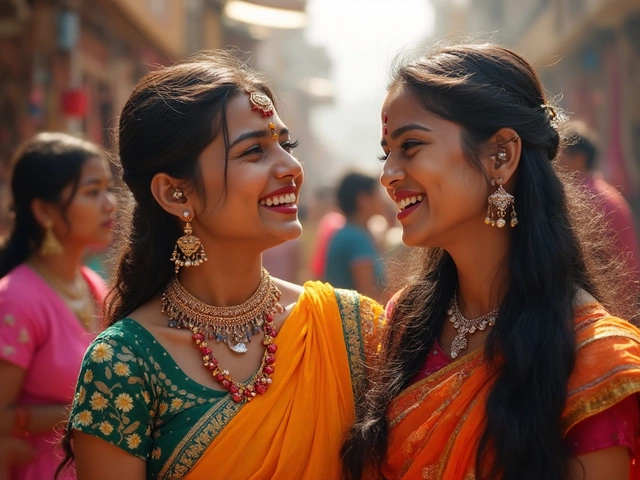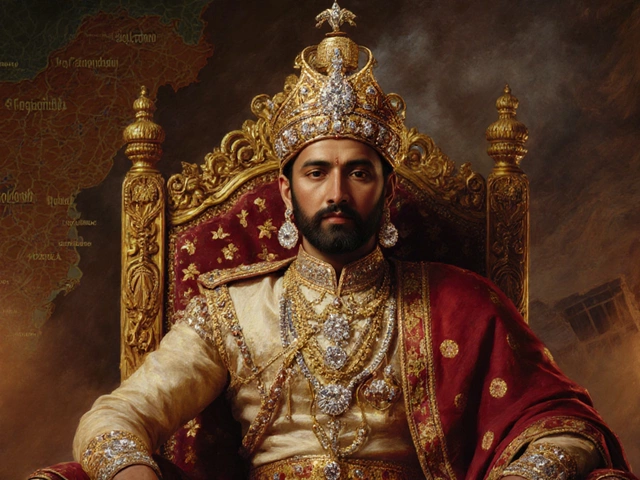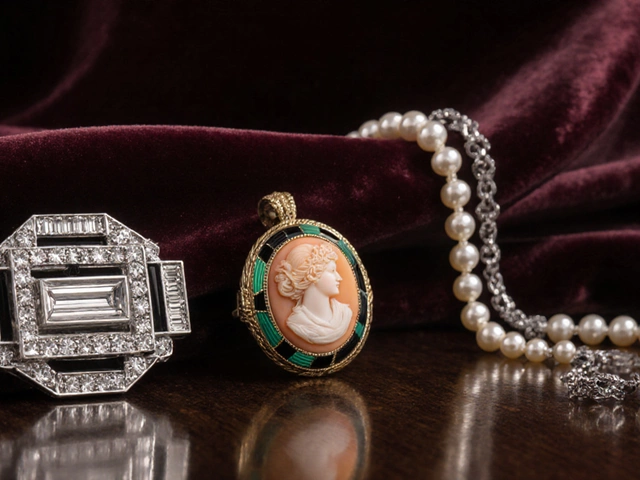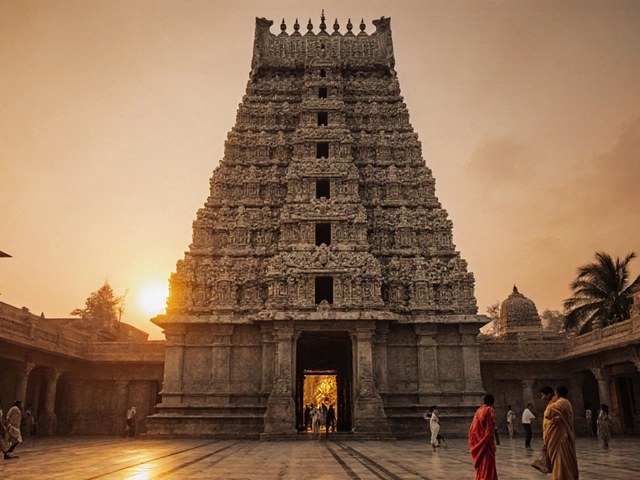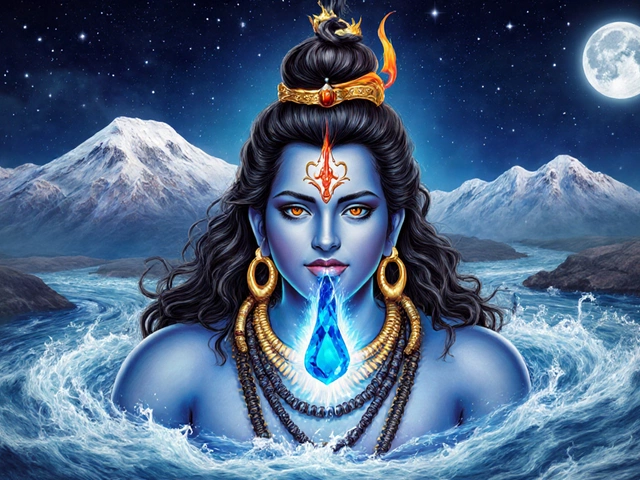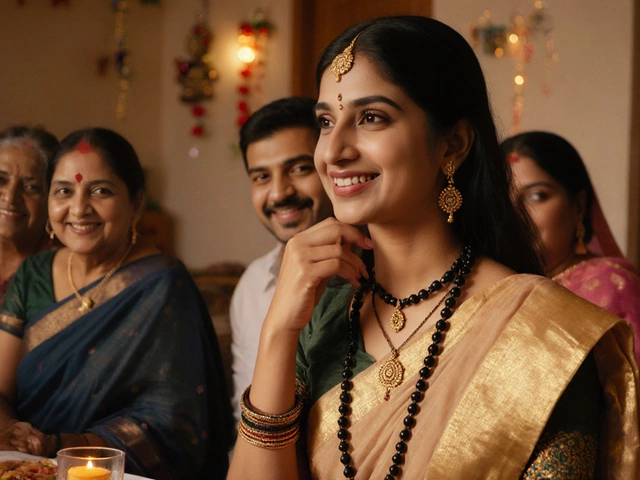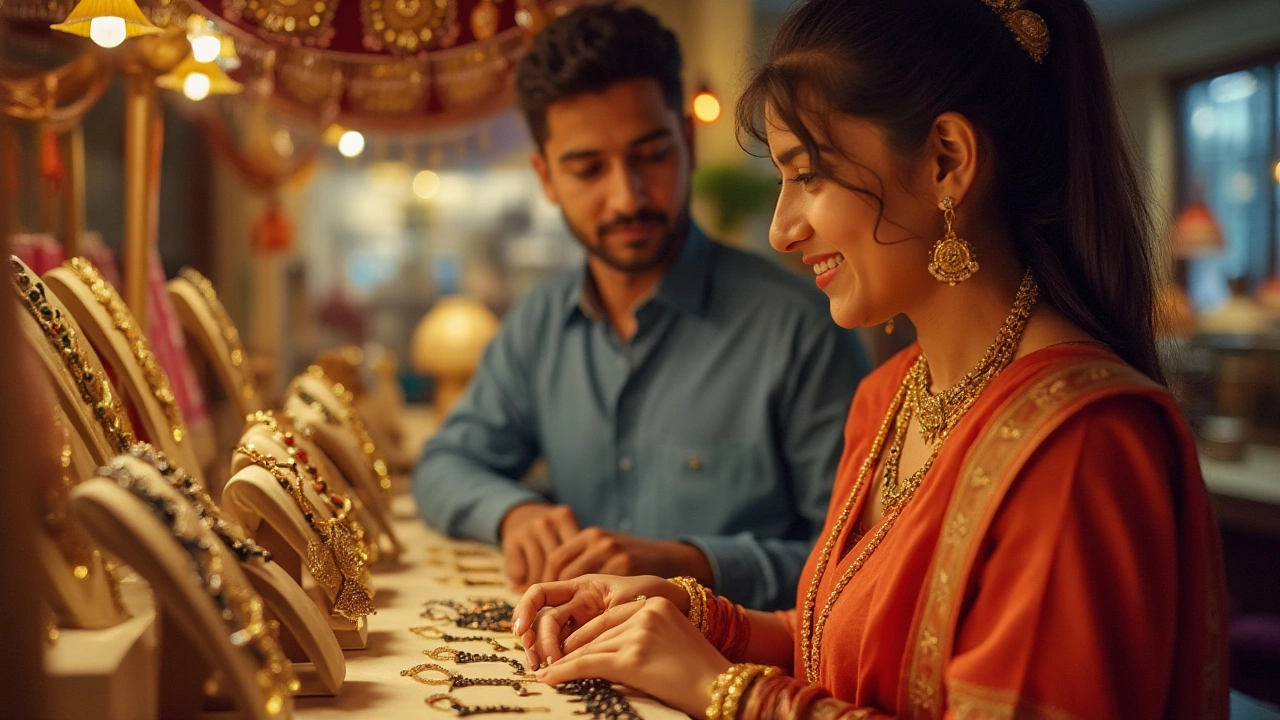
The mangalsutra, a quintessential symbol of marriage within Hindu culture, holds immense significance for many women across the globe. Traditionally, this piece of jewelry is not just an accessory, but a sacred emblem of commitment, love, and fidelity. However, in recent times, individuals are re-evaluating these age-old customs through a modern lens, often choosing to redefine or even, in some cases, entirely forgo such symbols.
What happens if a woman decides to remove her mangalsutra? How does society perceive this choice, and what does it say about the evolving traditions and roles in marriage? In this article, we delve into the fascinating journey of the mangalsutra, exploring its historical roots and examining its place in contemporary society. We look beyond mere aesthetics to understand its deeper meanings and reflect on how personal preferences shape and sometimes challenge traditional norms.
- Cultural and Historical Significance of the Mangalsutra
- Modern Trends and Changing Attitudes
- Symbolism and Personal Choice
- Impact on Relationships and Society
Cultural and Historical Significance of the Mangalsutra
The mangalsutra designs have evolved over centuries, yet the essence of its cultural and historical significance remains deeply rooted in tradition. Originally conceived as a talisman to ward off evil spirits and protect the sanctity of marriage, the mangalsutra has been an integral part of Hindu nuptial ceremonies for centuries. Its origins can be traced back to the Dravidian era, when the concept of a sacred thread, or 'tali', was used to signify the union between a man and a woman. This simple yet profound piece of jewelry became a universal marriage token, transcending regional boundaries and variations.
Traditionally, the mangalsutra is made from black beads interspersed with gold, which are believed to ward off negativity and serve as a protective amulet for marital harmony. The significance of black beads is tied to their representation of Lord Shiva, symbolizing strength, power, and destroyer of evil. Gold's inclusion signifies prosperity and well-being, offering a holistic safeguard for the married woman. According to cultural beliefs, the thread or chain of the mangalsutra strengthens the bond between the husband and wife and is a visible emblem of their commitment to each other, not just socially but spiritually as well.
As Robert Browning once said, "A man's reach should exceed his grasp, or what's a heaven for?" In a way, the mangalsutra reflects this notion, being more than a mere piece of jewelry—it is an aspiration towards a heavenly bond, one that seeks to reach beyond the mundane challenges of earthly life.
Through its rich history, the design and significance of the mangalsutra change with socio-cultural influences, yet its core purpose endures. Various regions have adapted it to suit local tastes and customs—South Indian styles often feature larger gold pendants, whereas North Indian designs may incorporate diamond accents. These diversifications not only showcase the artistic diversity of India but also reflect individual and community identities within the marriage ritual.
| Region | Notable Mangalsutra Characteristics |
|---|---|
| South India | Incorporates gold pendants, traditional motifs |
| North India | Features sleek designs, often with diamond or silver elements |
| Western India | Focuses on black beads and minimalistic style |
The evolution of the mangalsutra designs impacts how society perceives marriage today. In a time when personal expression is on the rise, many women and couples are selecting mangalsutras that reflect their personalities and values rather than strictly adhering to traditional norms. This change not only highlights the transition from conventional practices to personalized choices but also underscores the flexibility and resilience of cultural symbols in maintaining relevance in contemporary contexts. The decision to wear or remove a mangalsutra ties into larger dialogues around identity, autonomy, and the evolving institution of marriage itself.
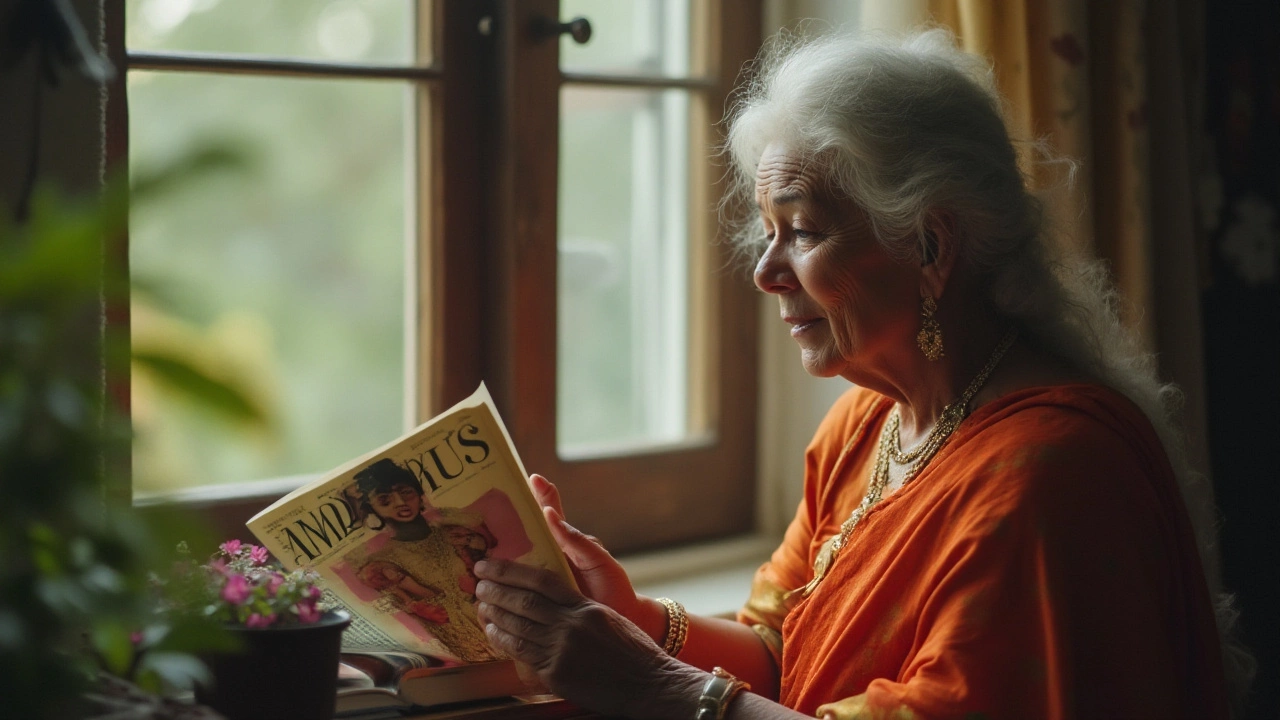
Modern Trends and Changing Attitudes
In the contemporary landscape, the significance of the mangalsutra is undergoing a transformation, reflecting the shifts in societal norms and personal values. As more women today balance traditional roles with modern ones, decisions around wearing a mangalsutra are evolving. Some choose smaller, more discreet designs that blend style with symbolism; others may opt to wear it on special occasions only, while some forgo it altogether in their day-to-day lives, focusing instead on the emotional and personal aspects of commitment rather than outward symbols. This shift is seen as a part of a broader movement among young couples, who are seeking to define their relationships based on mutual understanding and individuality, rather than prescribed conventions.
Fashion trends also play an influential role in this shift, as jewelry designs have diversified significantly. Designers are crafting mangalsutras that incorporate modern aesthetics, using unconventional materials and styles that appeal to the younger generation. For example, there's been a rise in minimalist designs that make use of gold and diamond only in subtle accents, allowing them to complement contemporary attire. The emphasis is often on versatility—jewelry that can transition seamlessly from a traditional ceremony to a corporate boardroom or an evening out. This evolution signals a departure from the past where a mangalsutra was distinctly placed as separate from other fashion jewelry.
There's also an evident shift in attitudes due to increasing gender equality and empowerment among women. Many women today view the decision to wear or not wear a mangalsutra as a personal choice, wrapped in autonomy rather than societal pressure. As gender roles continue to evolve, so do discussions concerning symbols of marriage and their relevance in modern life. A study by the XYZ Institute revealed that nearly 40% of urban married women across various Indian cities feel that wearing a mangalsutra should be an individual choice rather than a social mandate.
“The change comes with the realization that the true essence of marriage lies not in its display but in mutual respect and companionship,” said cultural analyst Neha Sharma.
This change in perception is not limited to any particular geographic location or social class. Observations have shown similar trends among the Indian diaspora worldwide, where adaptation to local cultures blends with traditional Indian customs. In essence, the adaptability and evolution of the mangalsutra, much like marriage itself, is an ongoing dialogue that reflects the balancing act between honoring tradition and embracing modernity. As women across the globe continue to reinterpret age-old conventions, the mangalsutra stands as a testament to both heritage and agency, a piece of jewelry that bridges the past and the present, allowing for personal expressions of identity and partnership.
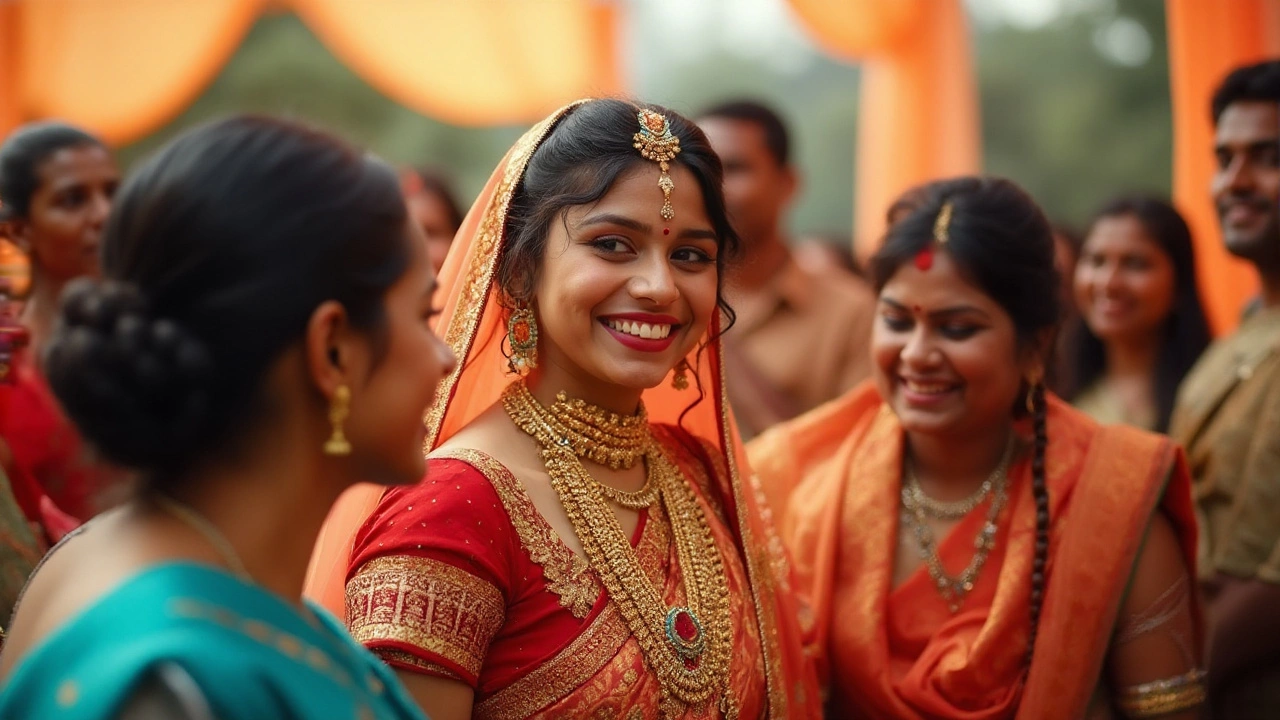
Symbolism and Personal Choice
For centuries, the mangalsutra has been a potent symbol of marital union, signifying the lifelong commitment that binds a couple together. Traditionally, it is considered a talisman that provides protection to both the marriage and the health of the spouse. Its origins trace back to ancient Indian practices where the thread's sacredness was believed to transcend physical beauty, offering spiritual strength to those who wore it. With intricate designs varying widely across different regions, each with their unique patterns and beads, it encapsulates the diversity and richness of Indian culture.
Yet, as society progresses, the perception of such symbols evolves. Younger generations, influenced by global perspectives and a shift towards personal expression, often view the wearing of the mangalsutra as a personal choice rather than an obligation. This change is partly due to the evolving dynamics in marriages, where equality and mutual respect take precedence over traditional gender roles. It's a statement that challenges societal expectations, and in many cases, a move towards redefining what it means to be married.
Interestingly, the symbolism of the mangalsutra is not entirely lost even when it's removed. Some women have chosen to adapt these symbols into modern jewelry designs, keeping the essence while merging it with their style. This adaptability shows how traditions can evolve rather than be discarded. A study from the Indian Institute of Management indicates that nearly 45% of married women in urban areas prefer contemporary designs or alternatives that align with their lifestyle, reflecting a broader trend towards personalization in marital traditions.
As noted by cultural historian Dr. Anjali Sharma, "The true strength of a tradition lies in its ability to reflect the values of the present while honoring the past. Removing the mangalsutra doesn't negate its importance; instead, it invites a conversation about its role in today's society."
For many, choosing not to wear a mangalsutra can also spark meaningful dialogues within families and communities, leading to greater understanding and acceptance of diverse beliefs and practices. It's not just about rejecting a piece of jewelry but embracing the freedom to represent marriage in a way that feels genuine to one's identity. As these discussions unfold, they contribute to broader societal shifts, heralding an era where personal choice is respected and celebrated.
With choices being more respected in modern times, women shopping for mangalsutra designs may find themselves considering not only the aesthetic appeal but the personal significance of the piece to them as an individual. Whether adorned as a mark of tradition or a fashion statement, the mangalsutra continues to be a conversation starter, reflecting its enduring place in the tapestry of cultural expression.
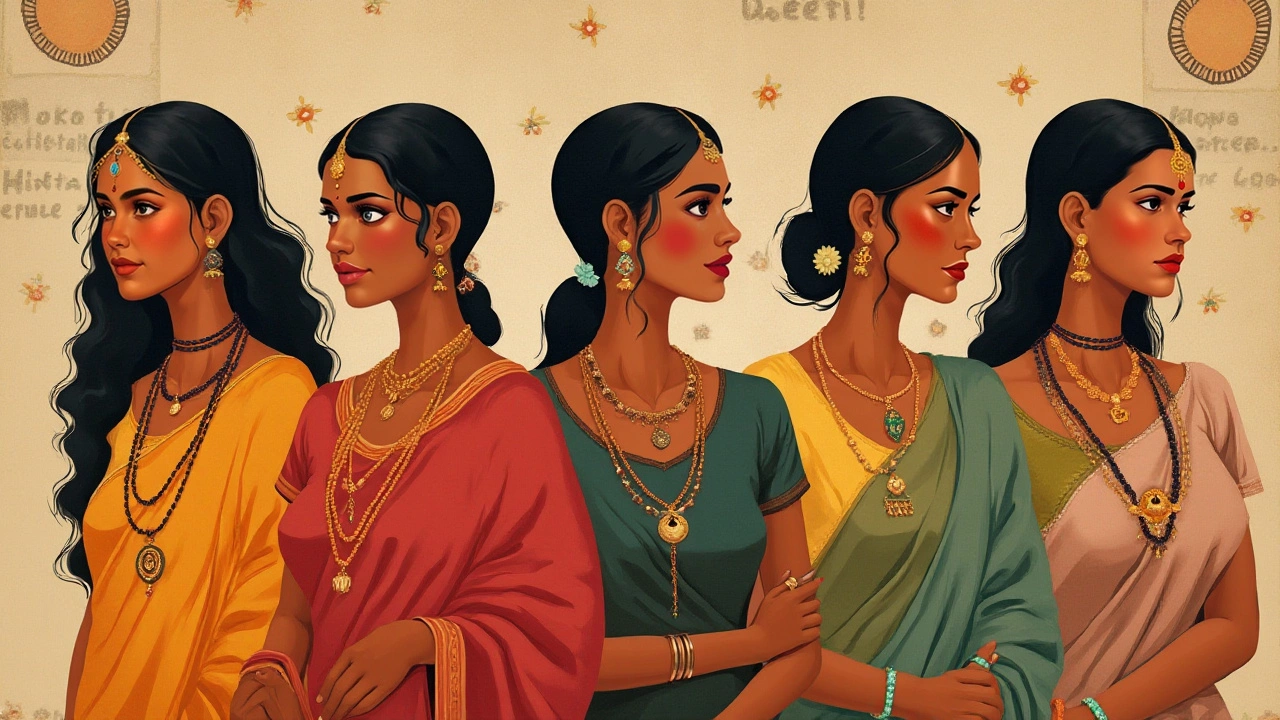
Impact on Relationships and Society
In the ever-evolving tapestry of human relationships, the decision to forego traditional symbols such as the mangalsutra carries both personal and societal implications. Historically, the mangalsutra has served as a public declaration of a woman's married status, and its absence can be seen as a bold statement. Couples who choose not to adhere to this custom may face scrutiny but also posses the opportunity to pave the way for progressive change. The discussion around this piece of jewelry has sparked dialogue about gender roles and marital equality. In modern urban settings, many women prefer lightweight or minimalistic designs to align with their lifestyles, questioning the necessity of its continual wear.
For some, removing the mangalsutra might symbolize liberation from traditional roles that no longer fit their personal ethos or lifestyle. This act can reflect a shift towards relationships that prioritize personal autonomy and mutual respect over traditional customs. On the societal level, these shifts may initially provoke unease among conservative circles, but they gradually contribute to a broader acceptance of diverse marital practices. Interestingly, research conducted by the National Council of Applied Economic Research highlighted that 60% of urban couples believe in 'updating' traditions to reflect mutual respect rather than hierarchical status.
However, this movement isn't about rejection but rather choice. Many women wear the mangalsutra as a personal keepsake, honoring cultural heritage while embracing new identities. The dynamic between personal preference and cultural expectation is delicate, and how one navigates it can greatly affect familial relationships and societal interactions. Interestingly, familial reactions can vary drastically, from respectful acceptance to adamant disapproval, thus sketching a spectrum of reactions within which each couple must find their balance. In a conversation documented by 'The Times of India,' a notable fashion designer remarked, "The essence of a tradition is personal respect and love, not just following a rule without heart."
As dialogues on personal freedoms and cultural significance intensify, they highlight the need for open communication within relationships. Couples who address these topics may experience deeper understanding and cohesion. Communities often observe these choices, resulting in discussions that, over time, lead to updated, more inclusive definitions of cultural practices. The choice to embrace or remove the mangalsutra isn't merely about individual preference; it serves as a reflection of shifting societal paradigms, helping shape what traditions mean in a contemporary world. A survey by the University of Cambridge's Anthropology Department revealed that regions with diverse community interactions exhibited more tolerance and faster acceptance of evolving marital symbols.


